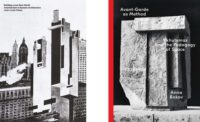Review of 'Ruin and Redemption in Architecture'
by Dan Barasch

Ruin and Redemption in Architecture, by Dan Barasch. Phaidon, 240 pages, $59.95.
The deft reuse of distinctive older buildings has become a happily commonplace event in prosperous cities—the churches turned into chic condominiums, for example, and the industrial buildings repurposed as office space or schools.
More vexing is the question of what to do with the idiosyncratic survivors left behind by history—visually striking unofficial landmarks, often relics of bygone industry, that summon up a sense of place but confound a developer’s spreadsheet. Buildings of this nature are the subject of Dan Barasch’s eye-popping survey of 66 buildings, showing what can be accomplished by imaginative designers and devotees. The disappointment? It could be so much more.
If the above comment reads like a slightly bittersweet what-if, then such a mood is appropriate for a subject that is captured vividly in the brief foreword by Dylan Thuras, cofounder of Atlas Obscura. “Exploring abandoned buildings isn’t about reveling in their collapse at all,” he writes, recalling teenage years spent in the thrall of deserted or disused flour mills in Minneapolis—now partially restored structures—which he holds up as examples of “unscripted architecture” that “occupy a shadowy liminal space between self-destruction and the possibility of rebirth.”
That sense of unscripted possibilities is the strength of Don Barasch’s collection of treasures lost and salvaged. It goes beyond the oft commemorated losses, such as Frank Lloyd Wright’s Larkin Building in Buffalo (1906, demolished in 1950) or Alison and Peter Smithson’s Robin Hood Gardens, London public housing completed in 1972 and felled in 2017, and such celebrated triumphs as the conversion by Herzog & de Meuron of London’s decrepit Bankside Power Station into the Tate Modern (2000). We’re presented with an array of such arresting but lesser-known visions of future-meets-past as MVRDV’s Gemini Residence—the conversion of two stocky concrete silos on a Copenhagen waterfront, their rounded forms now wrapped in eight stories of balconied housing like an interlocked set of silvery cocoons (2005). Or the coal crane in that same city turned into a spa-topped meeting facility by Arcgency (2017). Or the long-empty Classical Revival bank on Chicago’s South Side that Theaster Gates summoned back to life as the community-based Stony Island Arts Bank (2015).
The inclusion of this last project is important—a counterpart, rooted in local passion, to the fact that contemporary architecture’s acts of reimagination increasingly are fueled by the ripple effects of global wealth. It’s no surprise that the case studies on display include a slew of often privately conceived museums, including the ballyhooed Fondazione Prada, a gin distillery in Milan restored and updated by OMA in 2015. While it’s exciting to see great though troublesome buildings salvaged with an unexpected spark, such efforts can have a rarefied air, no matter how rough the architectural juxtapositions might be.
This aspect of the story isn’t explored by Barasch, a longtime proponent of turning a subterranean trolley terminal on Manhattan’s Lower East Side into a verdant “Lowline.” The text confines itself to straightforward monographic details that are informative but a letdown alongside the startling imagery and smart selection of the 66 cases, which include tantalizing glimpses of icons in limbo—World War II–vintage “sea forts” in the Thames Estuary that await salvation—and such ongoing causes as the hoped-for reclamation of the Los Angeles River as an urban greenspace.
Still, give credit to the book: we’re stirred to go beyond the constraints of the text, to think about the layered intersection of economics and culture and triumphant detritus. Every city holds possibilities beyond the obvious. The challenge is not to be content to settle for the norm.




